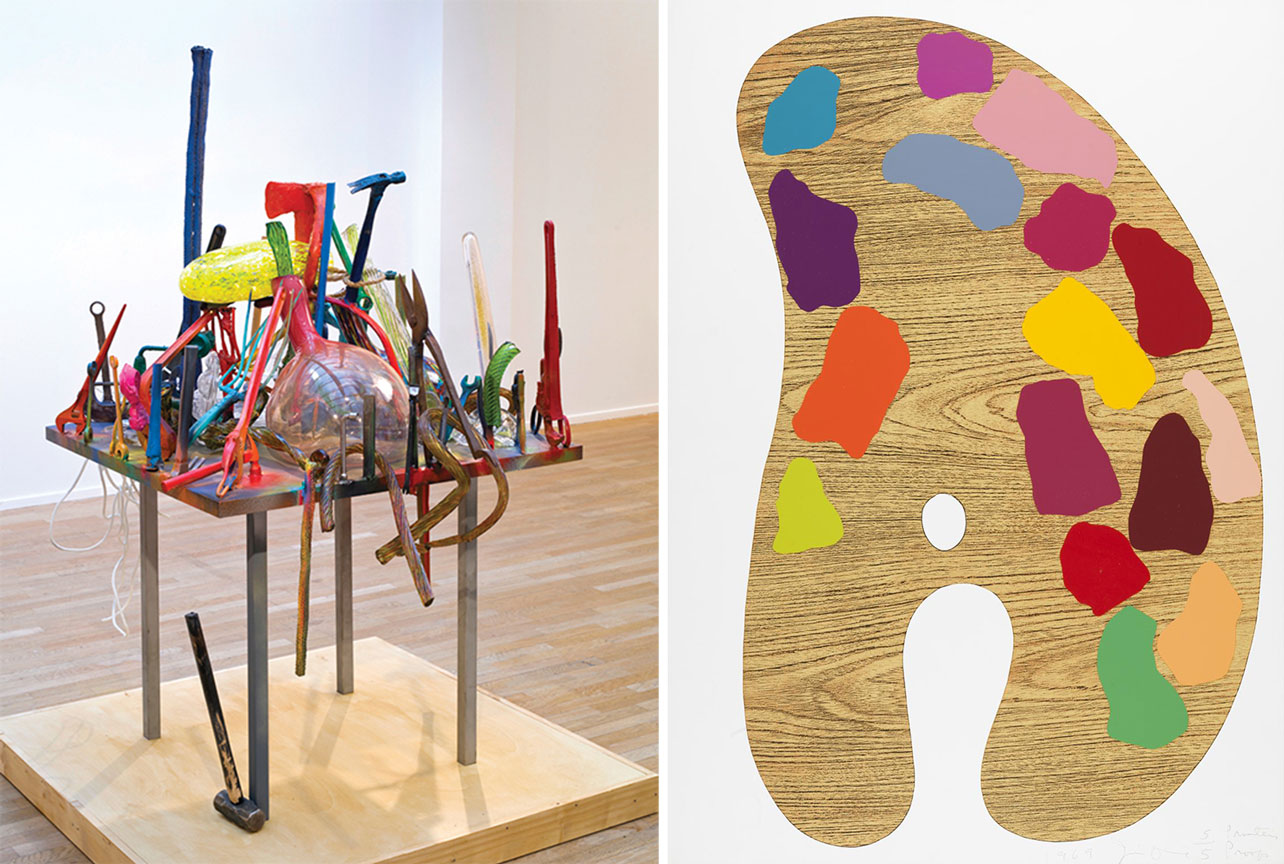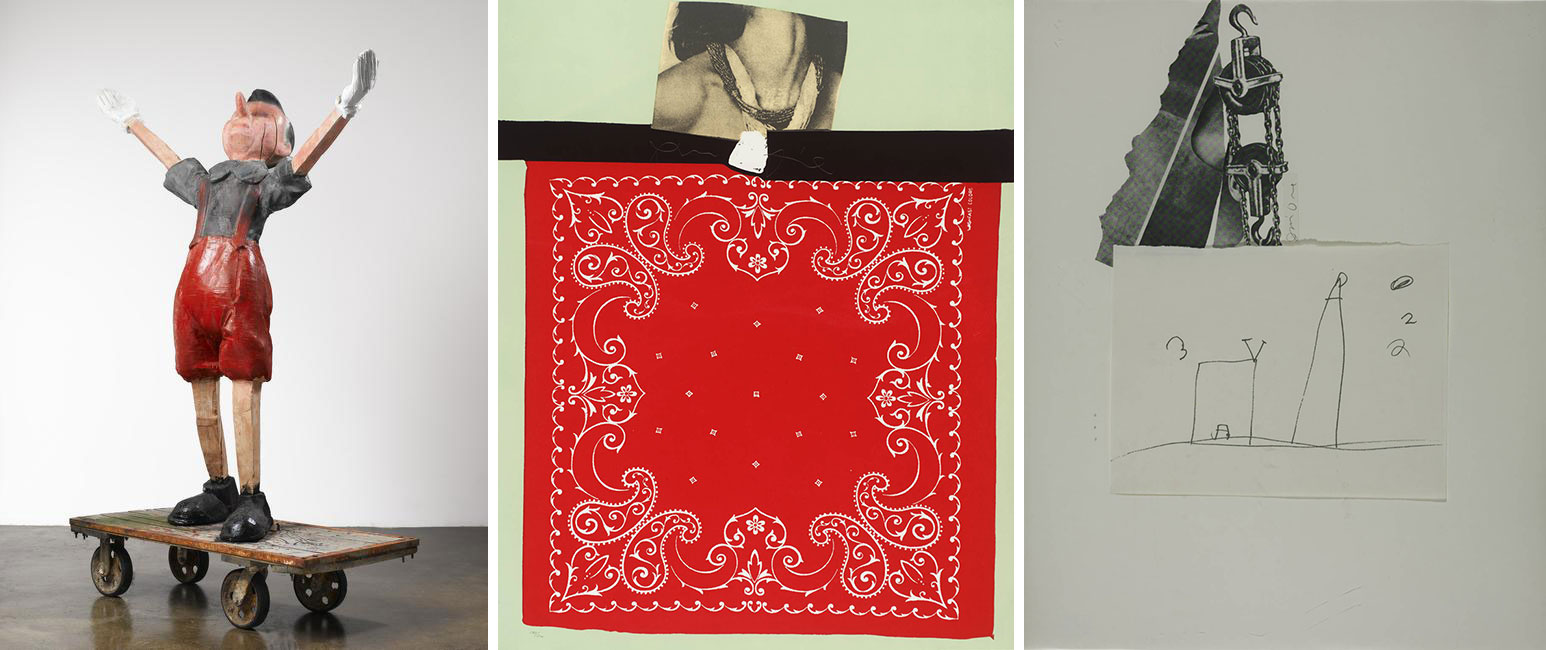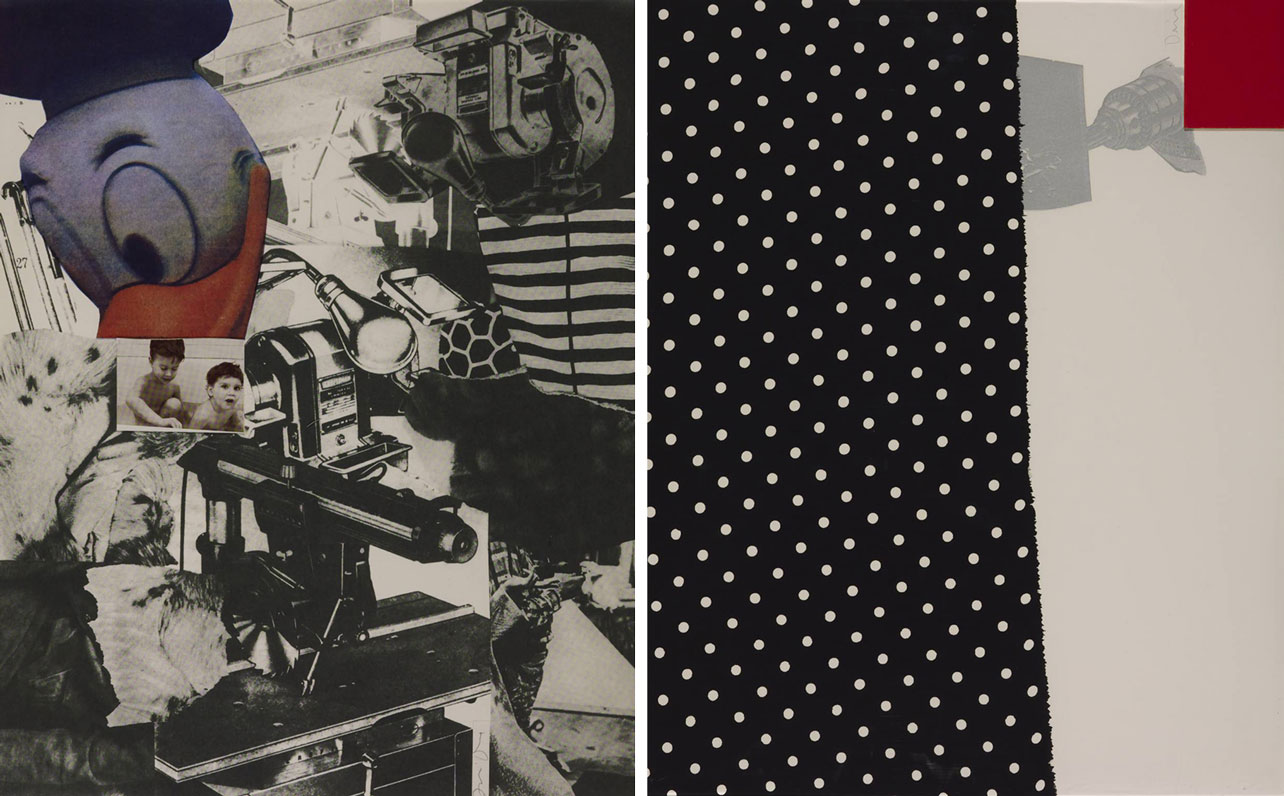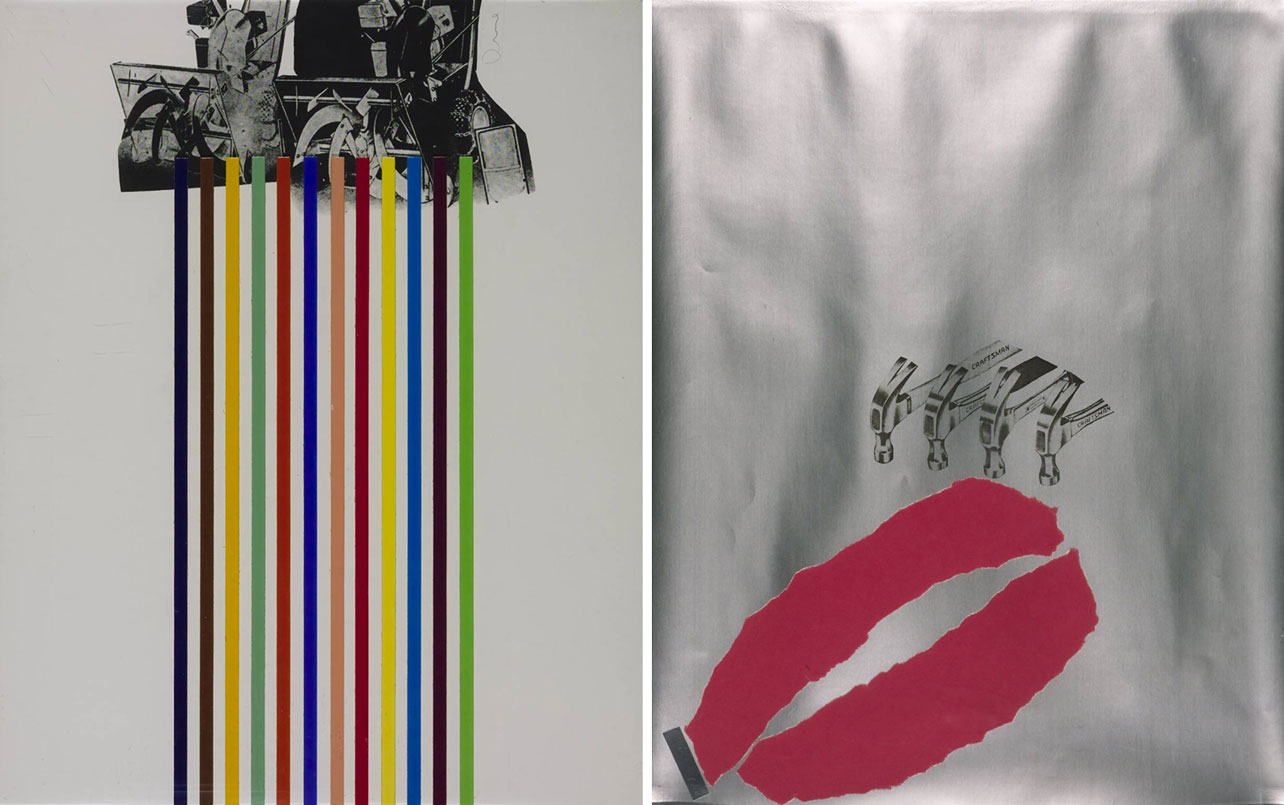TRACES: Jim Dine
 Today is the occasion to bear in mind Jim Dine (16/6/1935- ). He created a vocabulary out of subjects that have a child-like appeal, such as tools, birds, and hearts. These personally nostalgic symbols are also commonplace and universal, creating work that is both autobiographical and open to interpretation. Dine was also instrumental in the first “Happenings,” a progenitor of Performance art.. Through documents or interviews, starting with: moments and memories, we reveal out from the past-unknown sides of big personalities, who left their indelible traces in time and history…
Today is the occasion to bear in mind Jim Dine (16/6/1935- ). He created a vocabulary out of subjects that have a child-like appeal, such as tools, birds, and hearts. These personally nostalgic symbols are also commonplace and universal, creating work that is both autobiographical and open to interpretation. Dine was also instrumental in the first “Happenings,” a progenitor of Performance art.. Through documents or interviews, starting with: moments and memories, we reveal out from the past-unknown sides of big personalities, who left their indelible traces in time and history…
By Efi Michalarou
 Jim Dine was born in Cincinnati, Ohio. His parents were second-generation immigrants from Eastern Europe and practicing Jews, an identity which influenced his artistic career. His family owned a hardware store, where he gained a deep interest in the power of ordinary objects. He was particularly fascinated by the “metaphorical” or “mythic” quality of the tools of iron-working; they would inspire his works of the early 1960s, where he attached tools to canvases creating combinations of found object and pictorial image. He attended Walnut Hills High School before going to the University of Cincinnati. Being dyslexic, he found reading difficult, but found poetry easier than novels. He has consequently been a lover of poetry, and a poet himself, ever since. From 1953, Dine attended evening classes at the Art Academy of Cincinnati, where he studied with Paul Chidlaw, a well-known Abstract Expressionist painter. This was a style Dine would eventually reject, although his painterly training would impact his later work. He attended Ohio University, graduating with a BFA in 1957. In the same year, he married Nancy Minto, and in 1958 the couple moved to New York. It was in New York that Dine became involved with other important artists, including Claes Oldenburg, Allan Kaprow, and John Cage. Together, they staged “Happenings,” chaotic performances that took place around the city (but mostly downtown, away from the areas traditionally associated with art museums and galleries). One of the aims of the “Happening” was to break from the ubiquitous Abstract Expressionist style, as championed by the art world. Dine later stated, “It’s said we were the inheritors of Pollock’s tradition. That’s crap. Oldenburg and I came out of the theater that we knew; we were literate young men. We came out of Brecht, Artaud. We looked to Genet”. Dine met Oldenburg soon after arriving in New York, and the pair became good friends. Dine recalls that they were introduced by a friend who had an art space in the Judson Memorial Church in Greenwich Village: “Claes and I got together, drank a lot of beer, and talked and talked and talked. We talked about what we could do.” These conversations led to the founding of Judson Gallery, which Dine and several friends opened in a Greenwich Village basement in 1959. The short-lived gallery showed important experimental work as an antidote to the supremacy of abstract expressionism on the Upper East Side before closing in 1961. In 1962, Walter Hopps asked Dine to provide work for his ground-breaking show, “New Paintings of Common Objects”. Generally credited with being the first exhibition of Pop art in the United States, Dine’s paintings were shown alongside works by Roy Lichtenstein, Andy Warhol and Ed Ruscha. This exhibition secured Dine’s reputation and his place in a new art movement, however, Dine never saw himself as a Pop artist. Instead, he thought of himself as continuing the legacy of artists such as Jasper Johns and Robert Rauschenberg. By the mid-1960s, Dine was well-known on an international scale. In 1966, Robert Fraser staged an exhibition of Dine’s work at his gallery in London, but police raided the exhibition and twenty of Dine’s works were seized and confiscated; Fraser was prosecuted under the Obscene Publications Act. The court eventually determined that Dine’s drawings weren’t “obscene” but they were “indecent,” labeling them “crudely offensive and disgusting”. The next year, Dine made the decision to move to London with his wife and three young sons, where Fraser continued to represent him and he befriended artists such as R.B. Kitaj. Returning to America in 1971, Dine chose to focus on his drawing, making an effort to hone his technique and achieve a quieter, more nuanced style. A talented draftsman, he completed many self-portraits and portraits of his wife Nancy. During these years, he also developed a series of visual motifs which would crop up again and again in his works, including hearts, bath robes, and painters’ palettes. In the 1980s Dine also began to experiment with sculpture as a medium. In particular, he created a series of large-scale heart shaped sculptures for a range of different outdoor locations. Many of his sculptures made use of saws and blow-torches to create his works in an almost heavy-handed style reminiscent of the techniques of workmen, connecting these three-dimensional works to his lifelong fascination with workers and their tools. In contrast to his earlier conceptual and Pop-style painting, much of Dine’s latest production has been photographic. Dine contends that photography held a power he hadn’t found in other media, saying “It’s been very illuminating to me what one could say with photography that I haven’t wanted to say with painting and sculpture”. Dine has also developed new autobiographical iconography, pulling from his childhood to explore the character Pinocchio and a lifelong fascination with birds. In 2005, Dine married Diana Michener, who had been his partner since the early 1990s. Dine continues to travel extensively, often creating temporary studios in other cities when he’s working on particular projects or preparing for exhibitions.
Jim Dine was born in Cincinnati, Ohio. His parents were second-generation immigrants from Eastern Europe and practicing Jews, an identity which influenced his artistic career. His family owned a hardware store, where he gained a deep interest in the power of ordinary objects. He was particularly fascinated by the “metaphorical” or “mythic” quality of the tools of iron-working; they would inspire his works of the early 1960s, where he attached tools to canvases creating combinations of found object and pictorial image. He attended Walnut Hills High School before going to the University of Cincinnati. Being dyslexic, he found reading difficult, but found poetry easier than novels. He has consequently been a lover of poetry, and a poet himself, ever since. From 1953, Dine attended evening classes at the Art Academy of Cincinnati, where he studied with Paul Chidlaw, a well-known Abstract Expressionist painter. This was a style Dine would eventually reject, although his painterly training would impact his later work. He attended Ohio University, graduating with a BFA in 1957. In the same year, he married Nancy Minto, and in 1958 the couple moved to New York. It was in New York that Dine became involved with other important artists, including Claes Oldenburg, Allan Kaprow, and John Cage. Together, they staged “Happenings,” chaotic performances that took place around the city (but mostly downtown, away from the areas traditionally associated with art museums and galleries). One of the aims of the “Happening” was to break from the ubiquitous Abstract Expressionist style, as championed by the art world. Dine later stated, “It’s said we were the inheritors of Pollock’s tradition. That’s crap. Oldenburg and I came out of the theater that we knew; we were literate young men. We came out of Brecht, Artaud. We looked to Genet”. Dine met Oldenburg soon after arriving in New York, and the pair became good friends. Dine recalls that they were introduced by a friend who had an art space in the Judson Memorial Church in Greenwich Village: “Claes and I got together, drank a lot of beer, and talked and talked and talked. We talked about what we could do.” These conversations led to the founding of Judson Gallery, which Dine and several friends opened in a Greenwich Village basement in 1959. The short-lived gallery showed important experimental work as an antidote to the supremacy of abstract expressionism on the Upper East Side before closing in 1961. In 1962, Walter Hopps asked Dine to provide work for his ground-breaking show, “New Paintings of Common Objects”. Generally credited with being the first exhibition of Pop art in the United States, Dine’s paintings were shown alongside works by Roy Lichtenstein, Andy Warhol and Ed Ruscha. This exhibition secured Dine’s reputation and his place in a new art movement, however, Dine never saw himself as a Pop artist. Instead, he thought of himself as continuing the legacy of artists such as Jasper Johns and Robert Rauschenberg. By the mid-1960s, Dine was well-known on an international scale. In 1966, Robert Fraser staged an exhibition of Dine’s work at his gallery in London, but police raided the exhibition and twenty of Dine’s works were seized and confiscated; Fraser was prosecuted under the Obscene Publications Act. The court eventually determined that Dine’s drawings weren’t “obscene” but they were “indecent,” labeling them “crudely offensive and disgusting”. The next year, Dine made the decision to move to London with his wife and three young sons, where Fraser continued to represent him and he befriended artists such as R.B. Kitaj. Returning to America in 1971, Dine chose to focus on his drawing, making an effort to hone his technique and achieve a quieter, more nuanced style. A talented draftsman, he completed many self-portraits and portraits of his wife Nancy. During these years, he also developed a series of visual motifs which would crop up again and again in his works, including hearts, bath robes, and painters’ palettes. In the 1980s Dine also began to experiment with sculpture as a medium. In particular, he created a series of large-scale heart shaped sculptures for a range of different outdoor locations. Many of his sculptures made use of saws and blow-torches to create his works in an almost heavy-handed style reminiscent of the techniques of workmen, connecting these three-dimensional works to his lifelong fascination with workers and their tools. In contrast to his earlier conceptual and Pop-style painting, much of Dine’s latest production has been photographic. Dine contends that photography held a power he hadn’t found in other media, saying “It’s been very illuminating to me what one could say with photography that I haven’t wanted to say with painting and sculpture”. Dine has also developed new autobiographical iconography, pulling from his childhood to explore the character Pinocchio and a lifelong fascination with birds. In 2005, Dine married Diana Michener, who had been his partner since the early 1990s. Dine continues to travel extensively, often creating temporary studios in other cities when he’s working on particular projects or preparing for exhibitions.














